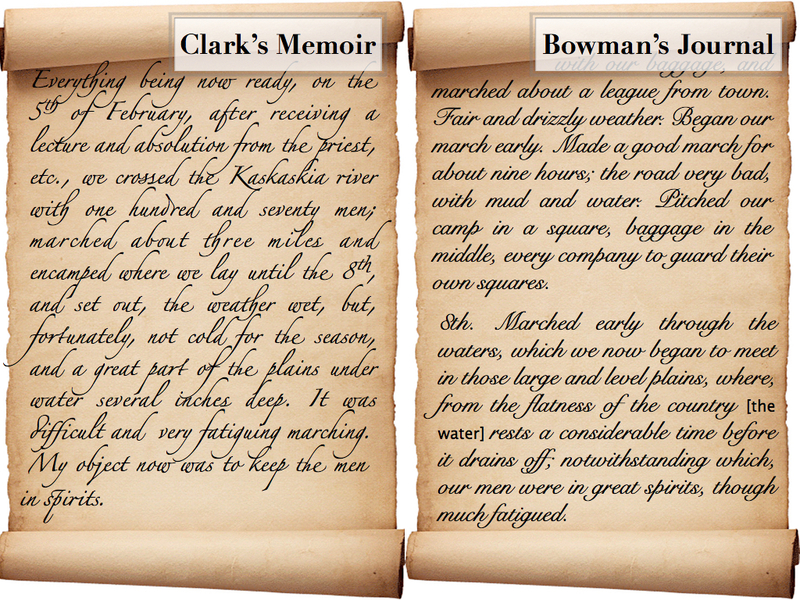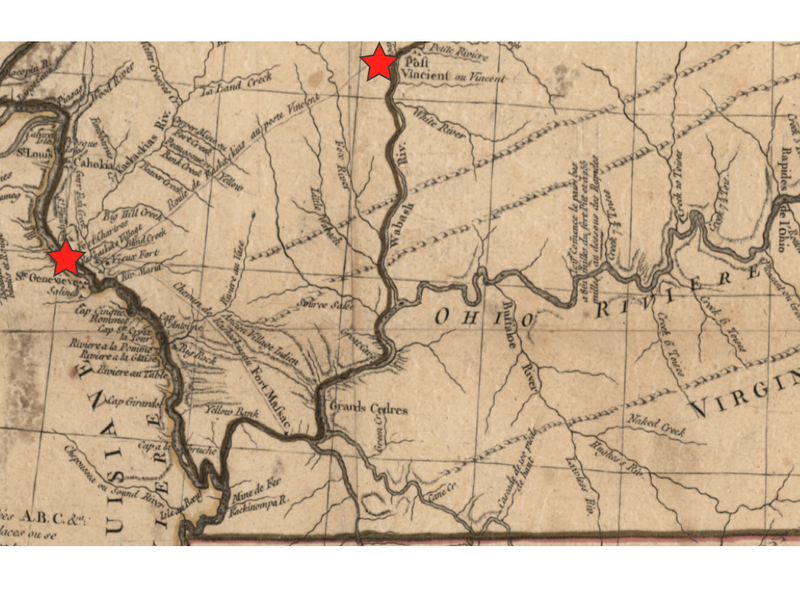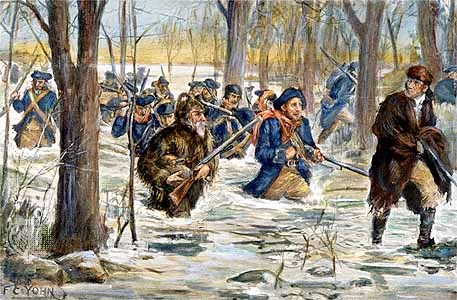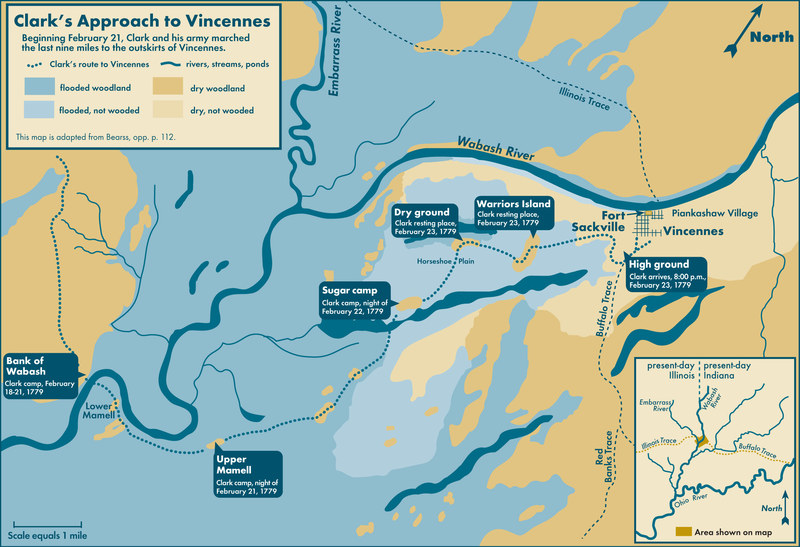Standing Water and Floods
Next, Clark describes the flooding his troops encountered on their way to Fort Sackville. Search for what Clark has to say about the flooding in his Memoir and record it.
Then, look at what Bowman wrote about the water and the flooding and record it.
How does it compare to what Clark says? Does Bowman’s writing support what Clark has to say?
Now compare what you found with this example.
What did we find?
The area where Clark’s men were marching is very flat and filled with streams and rivers. Take a look for yourself.
This 1781 French map shows the area Clark’s men were marching through. The red stars indicate the Village of Kaskaskia (on the left), where they began their journey and then Vincennes (on the right), where they were headed to take over Fort Sackville. Do you notice the number of rivers between Kaskaskia and Vincennes?
As we learned from our previous investigation, it had been raining and it was likely warm enough (30-40°F) that the rivers wouldn’t have frozen. The combination of these factors means that it would have been very easy for the rivers to swell and come over their banks, flooding the nearby fields. This is exactly what both Clark and Bowman describe in their documents.
But do their words match the description of their journey presented by historians or artists?
Let’s take a closer look: A famous painting of Clark’s journey toward Fort Sackville was created by a Hoosier artist named Frederick Coffay Yohn. This painting depicts Clark and his men wading through knee deep freezing water, as the falling rain has swelled the nearby rivers and caused flooding in the fields where Clark’s men were marching.
Now look back at your notes.
How does what Clark wrote compare to what the painting depicts? Does Clark’s text support the painting or does it tell a different story?
How does Bowman’s writing compare to the F. C. Yohn painting? Do his words support the depiction in the painting?
Do you find anything in the painting that contradicts (goes against) something Clark or Bowman wrote?
Finally, take a look at this map, provided by the Indiana Historical Bureau. This is one historian’s interpretation of the amount of flooding Clark’s men encountered as they got closer to Vincennes.
Consider the two maps you have seen, the text by Clark, and the text by Bowman. Then lastly, think back to F. C. Yohn painting.
Here it is again, for your reference:
Could the men in his painting, waist deep in water, really be crossing a flooded river instead of a plain? Could that account for the amount of water in the picture? Or does the amount of trees in the picture seem to indicate that they are walking through a flooded woodland?
Does the amount of water pictured match the description of “water several inches deep” that Clark gives? Or did F. C. Yohn take “poetic license” (over-exaggerate) with the amount of water he shows in his painting?





